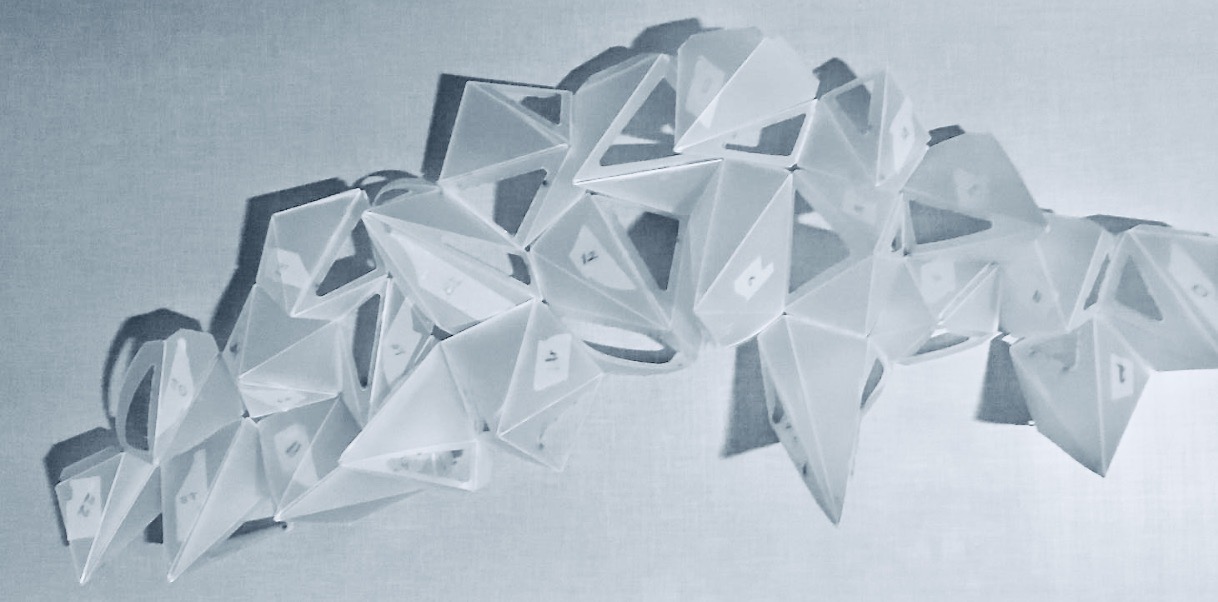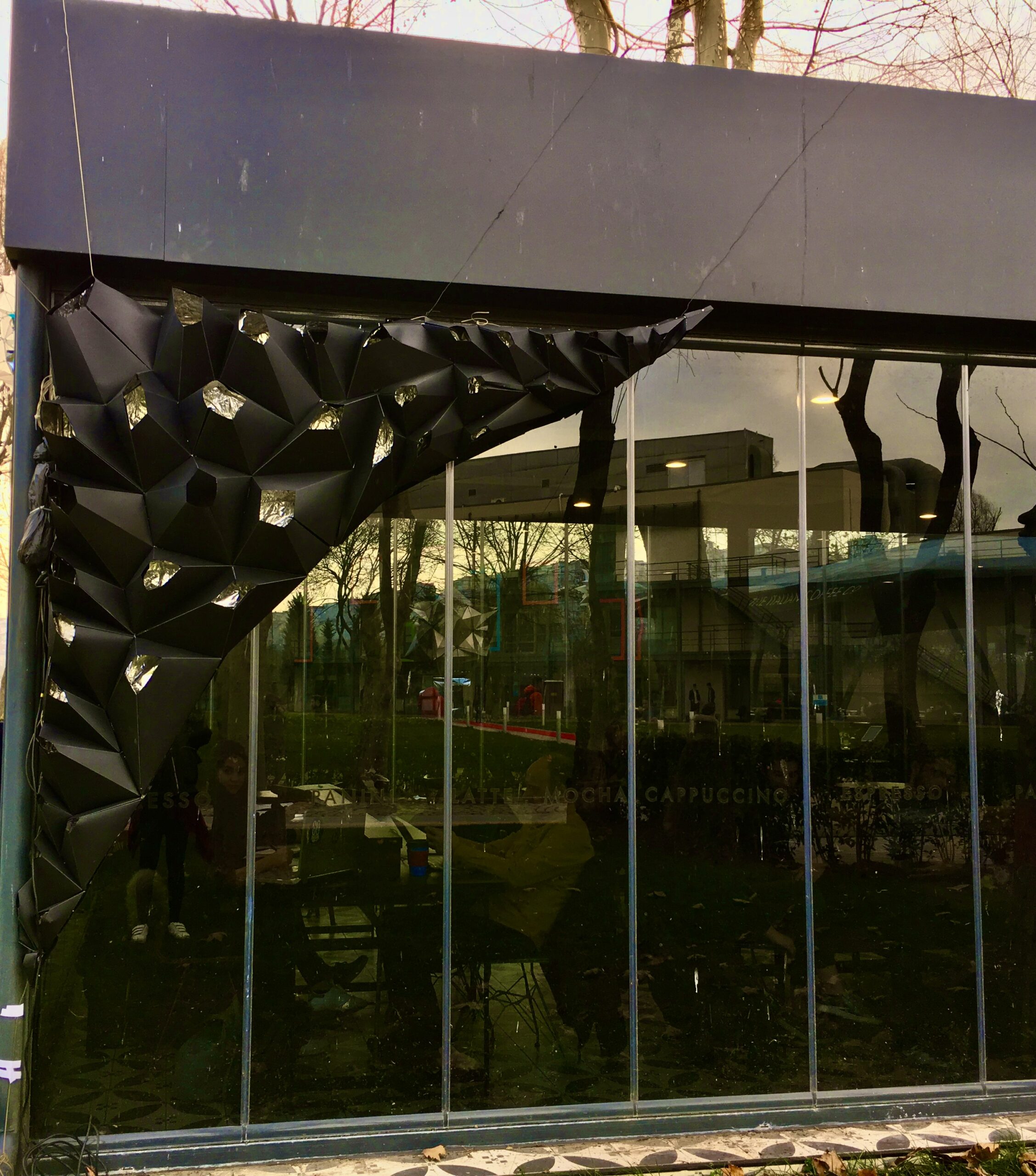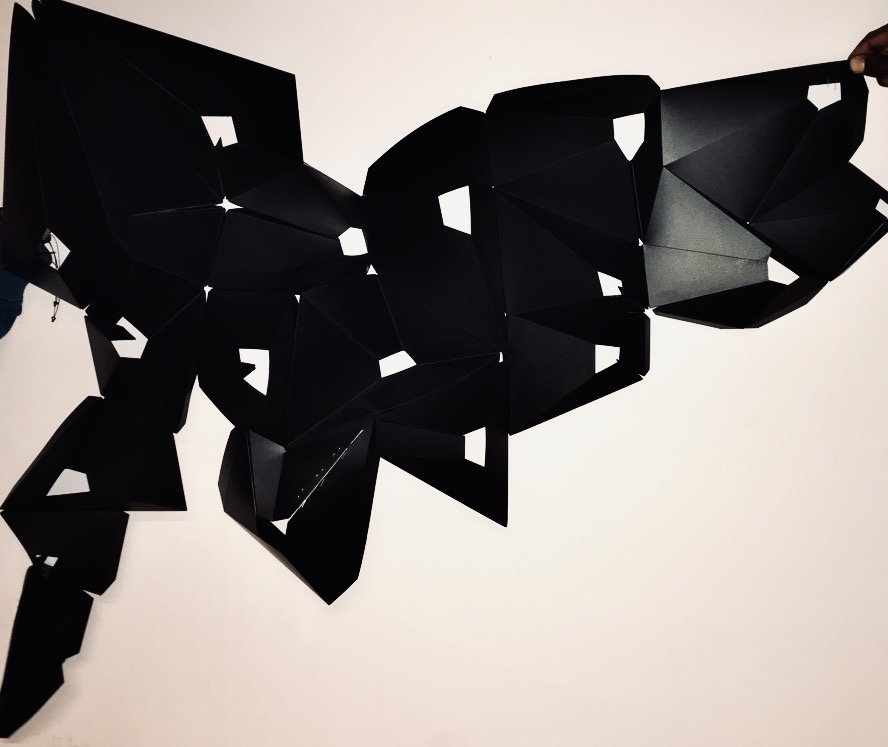Muhseen Abdullahi has an underlying true confidence. It is the confidence of the fact that light is more than light. A designer by profession, he has discovered a design of life which possesses a different relation to things between use and beauty. The consciousness of the essence of light in all its developments is at a high point of fruition; the expression is organic, something more than light, some factor, some revolution of a substance, some feeling manifested by the quality of time and space in the perception of it. It is the awareness of the fact and therefore the method of his expression that makes his exhibition what it is.
To Abdullahi, light is never a mere phase of process technique. It is the substance in which to describe it. It is through light that sympathetic distribution and form are given to air, the substance in which the importance of the meaning is expressed. His work is a manifestation of pity and attitude of sympathy in that the process technique indicates the artistic perception. It does not forcibly impress itself. It patiently awaits. It is worth remembering after its departure because it does not compel remembrance — it commands it.
When a phase of light is presented to him, as has been exhibited in a deep feeling in his first expression of Christmas village lighting in Abuja, designed for the Transcorp Hilton, it gave a commonplace look to a public space a transubstantiation into something sentimentally evanescent. Incandescent light bulbs were hung and the forms gently glowed above the crowd heads and changed the air into something vital. The expression did not only decorate the space there — it was a new expression of it. It taught people to feel the thing. That particular expression made Abdullahi realise that light is not something to be seen at — it is something to be perceived.
In Great Britain this idea grew. Abdullahi, at Castle Park Arts Centre in Cheshire, designed light where the light related to art and did not overshadow it. Exact track lights and linear battens gave texture and tone in subtlety, allowing tranquillity to exist by nature. The result was stillness, but not sterility. This was gaining growing confidence and that maturity which tells one to act with restraint. It was elegant, minimal, and intentional. It was quietness of brilliance.
His Sensory Architecture: Light and Sound Interaction installation pursued that ethos. Created during his study at Istanbul Bilgi University, it considered geometric forms, sound, and light as modifiers of perception. It consisted of triangular modules, illuminated by LEDs, which in virtue of their being invited people to conceive space as something breathing, reactive, alive. It was, but not noisy. It was precise yet emotional, analytical and poetical. It demonstrated Abdullahi’s rare sensitivity to produce something naturally technical which was deeply human.
This proves also on a grand scale in the Nasarawa Technology Village Project in Nigeria. Here, as Chief Lighting Designer, Abdullahi has evolved a lighting masterplan on a new estate. This was not pure function, but identity. The feeling and practical were fused in the design, where a harmonious lift of visual rhythm was set forth to interlink street, house, and public fenestration. This was light as infrastructure — yet again, language. The project was national in its congratulations and worth commendation for its balance of sustainability, its emotion, and its vision.
Other creations, like the City Gate EU Day Installation in Abuja and London offices on Ganton Street and Southwark Street, still propound that same search of subtlety. They show consideration of proportion, softness, and human presence. Abdullahi finds tranquillity in purely functional spaces. Unity is produced where most would prefer utility. Abdullahi’s light is sculptured, not placed thus. He designs for human habitation internally, not externally observed.
Abdullahi’s technical mastery of the tools — Dialux Evo, Relux — generates precision, but that is concurrently as fundamental for emotional purposes. It is never cold. Structure in the interest thereof of soul. Light hence becomes an instrument of composition of atmosphere, a little mathematics of comfort. Not relying on extravagance or difference, he finds the appropriate temperature, the relevant tone, tone, and rhythm. His work is regulated, honest, emotionally true. Hence, in the place of novelties, the adequacies are celebrated. That which gives his method its justification is its honesty. Fame and spectacle are not striven for. Limitation, humility, and real concentration.
What he is concerned with is how light in virtue may not be natural but considered sympathetic. All his projects, great or small, are conceived by starting with that premise: how can light connote a link between spaces and people? This is the question which enables the consistency of his work. Hence every experiment bears of itself the physical coherence of being a part of a sounding board of a larger discussion — that between art and architecture, structure and soul. Abdullahi’s conception is simple, but profound. He does not make illumination merely in order to reveal form, but illumination which gives form. His work does not imitate grandeur; it, on the other hand, sustains it.



